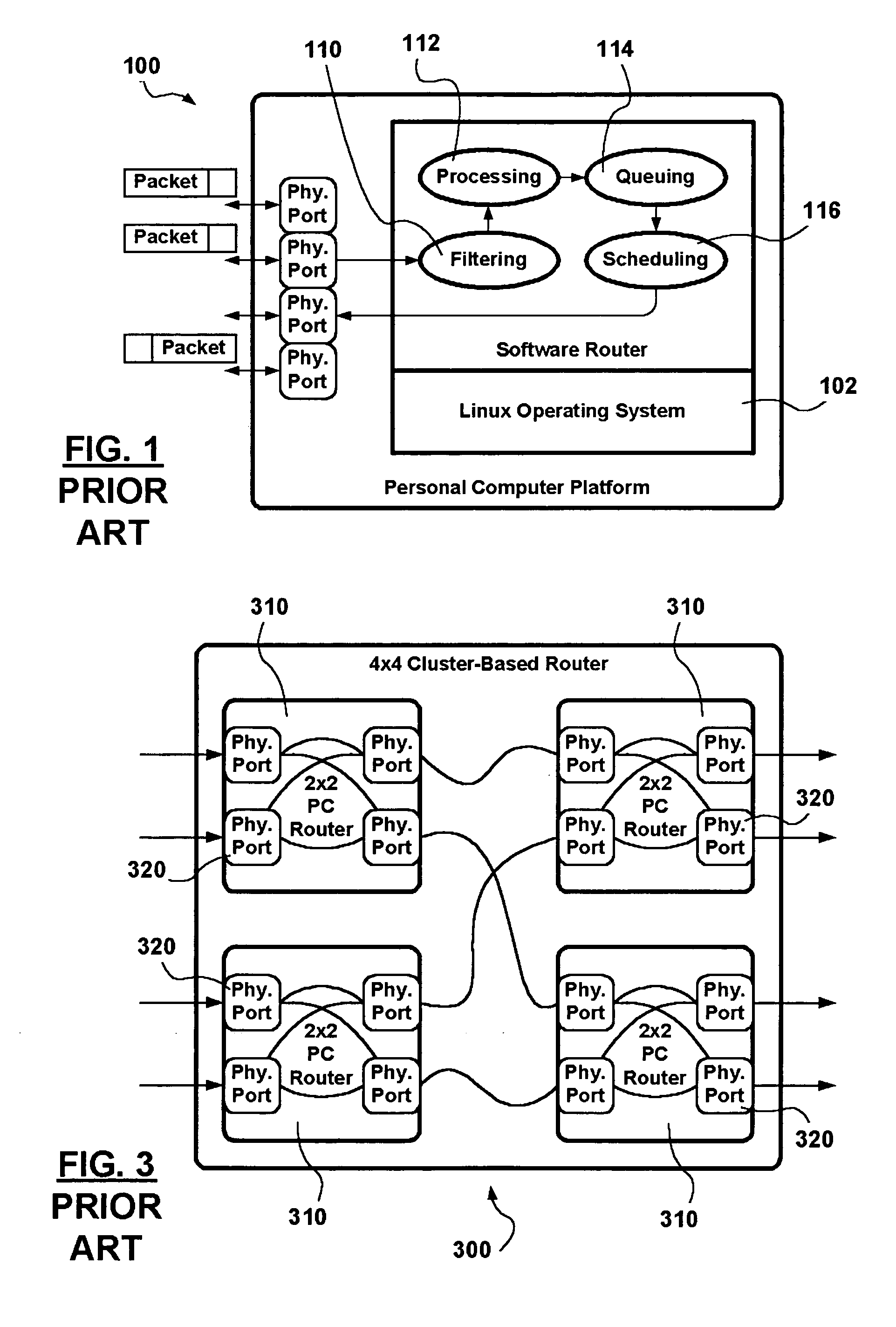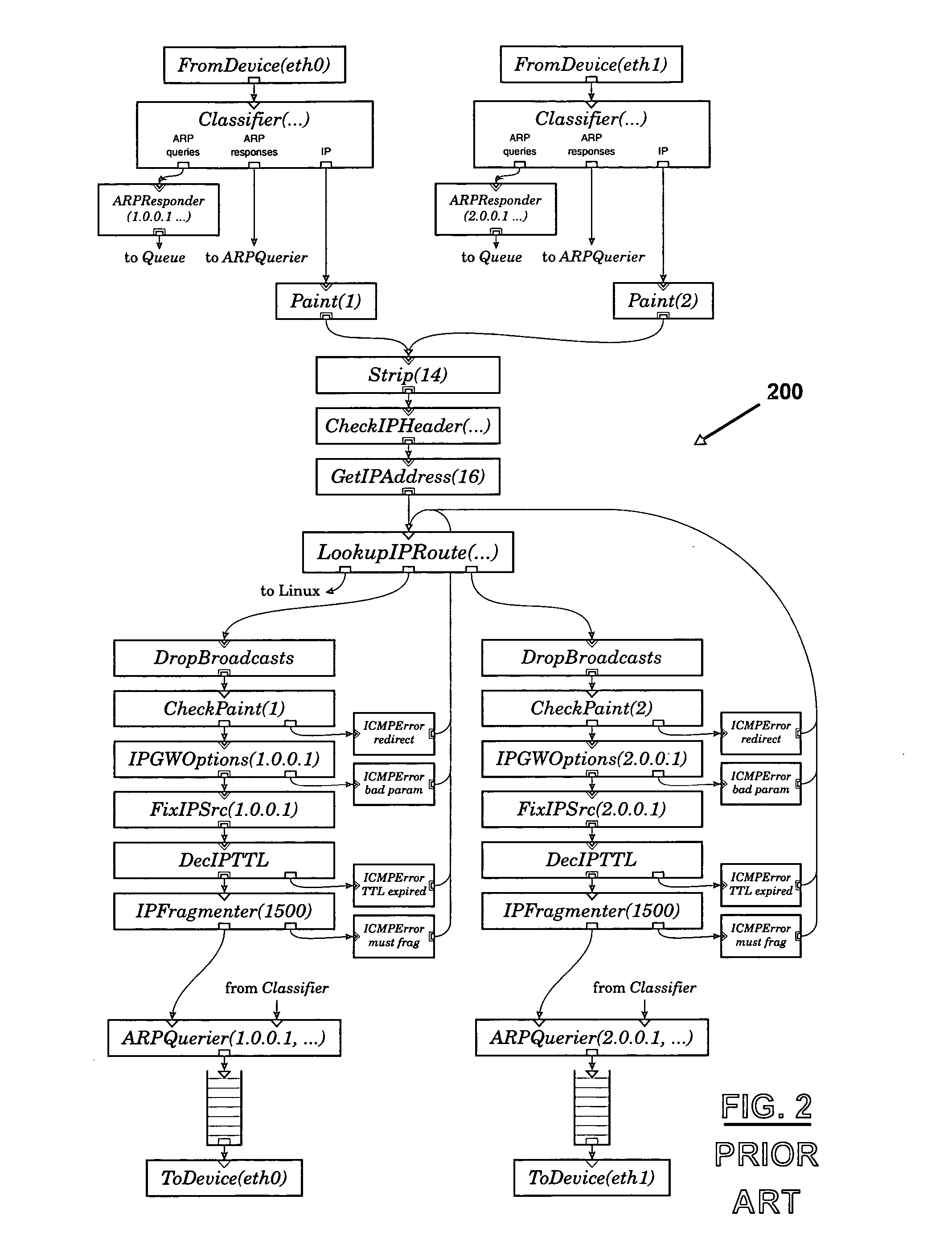Software configurable cluster-based router using heterogeneous nodes as cluster nodes
a cluster router and cluster node technology, applied in data switching networks, frequency-division multiplexes, instruments, etc., can solve the problems of high development and validation costs, and typical risk of technology change, and achieve high routing capacity, cost-effectiveness, and diversity high
- Summary
- Abstract
- Description
- Claims
- Application Information
AI Technical Summary
Benefits of technology
Problems solved by technology
Method used
Image
Examples
Embodiment Construction
[0058] A solution is proposed wherein multiple routing elements are configured to operate as a single routing entity seeking cost reductions and improvements in scalability, and easy re-configurability. Improvements are sought in performing certain functions such as, but not limited to: billing, payload decryption / encryption, decoding / encoding content, network management, video stream processing, authentication, directory services, etc. While cost overheads may be reduced by employing inexpensive off-the-shelf equipment, provisioning special functionality may benefit from the use of specialized equipment when a favorable efficiency-cost ratio may be taken advantage of in respect of specific packet processing functionality.
[0059] In accordance with an exemplary embodiment of the invention, FIG. 4A shows an exemplary cluster-based router implementation 400 which includes a 3×4×3 (cluster) arrangement of PC-based router cluster nodes 402 interconnected in accordance with a toroidal to...
PUM
 Login to View More
Login to View More Abstract
Description
Claims
Application Information
 Login to View More
Login to View More - R&D
- Intellectual Property
- Life Sciences
- Materials
- Tech Scout
- Unparalleled Data Quality
- Higher Quality Content
- 60% Fewer Hallucinations
Browse by: Latest US Patents, China's latest patents, Technical Efficacy Thesaurus, Application Domain, Technology Topic, Popular Technical Reports.
© 2025 PatSnap. All rights reserved.Legal|Privacy policy|Modern Slavery Act Transparency Statement|Sitemap|About US| Contact US: help@patsnap.com



